By the Light of the Moon
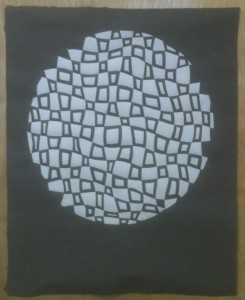
©2013 Helen Hiebert
The Morgan Conservatory of Art, a fantastic papermaking institution in Cleveland, Ohio, indirectly inspired the 100 x 100 Paper Weavings Project. Early this summer, they sent me two pieces of handmade paper and requested that I make a piece for their auction (it is tomorrow night for those of you in the area). After studying both papers, I decided that weaving would be a good way to join them, and the colors reminded me of moonlight.

© 1996 Helen Hiebert, Woven Shades with light OFF
I started thinking about the paper weavings I’ve done over the years, and there are some subtle nuances to be recognized and experimented with. Like this: look what happens to these woven lampshades when you turn the light on.

©1996 Helen Hiebert, Woven Shades with light ON
The two papers blend together and you don’t see any distinction. I find it really interesting that the space between the woven pieces (the paper slits) are highlighted by illumination.
Here are the latest 100 x 100 Paper Weavings:
#3
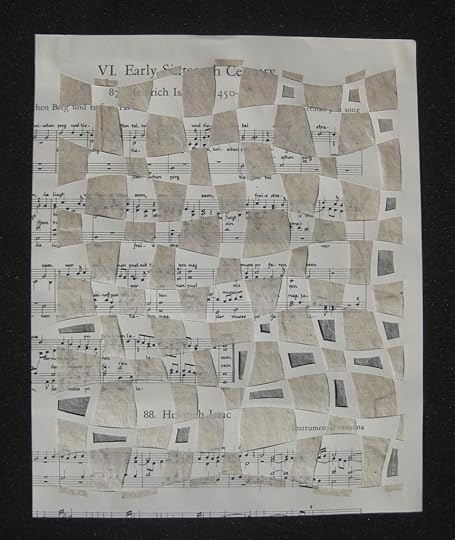
© 2013 Helen Hiebert, 100 x 100 Paper Weavings #3, 10″ x 8″, $100
When I first posted about this project, artist Sarah Strong offered to send me some papers. I received a lovely package filled with encyclopedia pages, sheet music, German bible pages and a book about ships. I coupled this sheet music with a piece of my own handmade kozo paper.
Now I have to admit that despite a couple of workshops in Japanese papermaking, I am nowhere near expert status. I tend to agree with Malcolm Gladwell’s 10,000 hour rule and take solice in the fact that I have not performed my 10,000 hours with kozo.
That said, paper weaving can hide imperfection. If you look closely at this weaving, you can see that the paper fades from top to bottom. This is due to the fact that the sheet is thicker at the top than the bottom. If you are familiar with Japanese papermaking (this link is a video by Tatiana Ginsberg demonstrating the technique), you’ll understand how this could easily happen.
#4
[image error]
© 2013 Helen Hiebert, 100 x 100 Paper Weavings #4, 10″ x 8″, $100
When I was in Minneapolis a year or so ago, I had the pleasure of visiting Wet Paint, an art supply store in St. Paul, and perusing their fabulous paper selection. This weaving is a blend of two papers that I purchased there: crystal metal (which, by the way, was a challenge to photograph) and electric zigzag lokta Paper.

electric zigzag lokta paper, perrier green
The lokta paper is made from the inner bark of the Nepalese Daphne plant. You can find lokta papers in a variety of solid-colors as well as printed patterns. This one is made by crumpling a large sheet until it is reduced to a two-inch square and then dipping selected points in dye. The crumpling also makes the paper very soft and cloth-like.

© 2013 Helen Hiebert, 100 x 100 Paper Weavings #5, 10″ x 8″, $100
Today’s weaving utilizes the old photographic technique of van dyke printing. My friend and fellow Penland instructor Alyssa C. Salomon created these two prints on some of my handmade abaca paper. The bird stood alone on a white sheet and the grasses were printed on a green sheet. I decided to weave in a bamboo branch for hanging.
There are still a few days left to enter the drawing to win a copy of my book, Playing With Paper (the drawing will take place 10/2/13. Leave a comment below telling us about your favorite type of paper to join in the fun! Many thanks to those of you who commented on the last post – feel free to comment again to get a second chance.
I’ve started a pinterest board featuring this week’s five paper weavings. Check back each day I post on the blog as new ones are added.
Related Posts
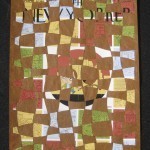 100 x 100 Paper Weavings + A Contest
100 x 100 Paper Weavings + A Contest
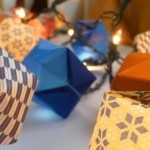 7: Inflatable Paper
7: Inflatable Paper
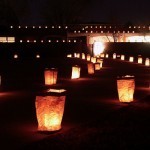 2: Paper Lights!
2: Paper Lights!
 18: Pop-Ups
18: Pop-Ups
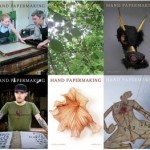 Support Hand Papermaking!
Support Hand Papermaking!




